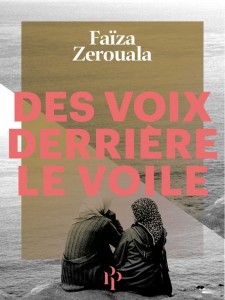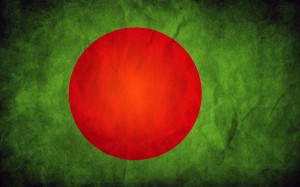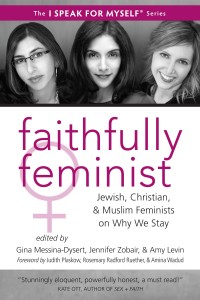After our review of Boy vs. Girl, a couple readers asked for MMW’s thoughts on The Girl in the Tangerine Scarf. Having really enjoyed the book when I read it last summer, I was happy to oblige! Beware: minor spoiler alerts!
 Written by Mohja Kahf, The Girl in the Tangerine Scarf tells the story of Khadra Shamy, a Syrian-American woman returning to her hometown of Indianapolis for the first time in several years. Most of the novel looks back to her childhood and early adulthood during the 1970s and 1980s, as she negotiates questions of religion, identity, racism, and belonging. Interspersed with this is her return to the community at the age of 28 as a magazine photographer doing a story on minority religious communities in America.
Written by Mohja Kahf, The Girl in the Tangerine Scarf tells the story of Khadra Shamy, a Syrian-American woman returning to her hometown of Indianapolis for the first time in several years. Most of the novel looks back to her childhood and early adulthood during the 1970s and 1980s, as she negotiates questions of religion, identity, racism, and belonging. Interspersed with this is her return to the community at the age of 28 as a magazine photographer doing a story on minority religious communities in America.
Covering a long time span and a variety of geographic locations, the novel follows Khadra’s religious paths, from being the daughter of a Dawah Center worker, through a “surge of religious austerity” in her early teens, a “neoclassical phase” of traditional learning as she gets older, a sense of disillusionment and uncertainty as she comes to question the monolithic image of Islam she grew up with, and ultimately a reconciliation of sorts as she comes to feel more comfortable in her own religious path while appreciating the community where she was raised.
The novel also ties in an impressive range of political issues, reflected in local community relations (Sunni-Shi’a tensions within the Muslim community, and KKK violence and other racism directed at the Muslim community from some others in the city) as well as international issues (the Iranian revolution, the occupation of Palestine, the dictatorship in Syria, etc.)
I loved reading this book. There’s something particularly lovely about reading a novel with so many resonating experiences. Many of these, being specific to the experience of being Muslim in North America, are rarely represented in literature, and even more rarely represented in literature that’s actually any good. There were several moments that really grabbed me or even made me laugh out loud, not so much because of their humor (although there was plenty of that too), but just because of how true they felt. Quotes at the beginning of each chapter – from sources as diverse as scientific writing on insects, historical writing about Indiana, Qur’anic citations, and mystic poetry – add extra thought-provoking moments to the book.
Kahf’s writing is engaging, real and honest, and often very funny. We can feel the young Khadra’s confusion over the meanings of Muslim and American identity as she encounters people who challenge her conceptions of both, and an older Khadra’s angst as she battles Muslims who exclude her or demean her because she’s a woman, despite her earnest quoting of religious principles establishing women’s rights in Islam.
Khadra’s experience of hajj is beautifully and poignantly described; the Kaaba, a Lady, is their Hostess:
Everything was ceaseless motion around the Lady of the Night, and the Lady was absolutely still. She was Sakina, the serenity within the whirl. Imagine, Khadra thought, looking at the massive tides of pilgrims around the Kaba, these circles get bigger and bigger, as people all over Mecca face here to pray, then all over the world, even as far as America, wave after wave of people, in concentric circles going all around the earth, and I am here at the centre of all that. Khadra was a little stunned, and then she was taken up swirling too, and her mother was pleading, “Hold onto Jihad [Khadra’s younger brother]! Hold him tight!”and her father was calling, “Stay with me! Stay with me!” And they were off, part of the sea.
The euphoria of this moment, however, is followed by Khadra’s shame at being arrested by Saudi police for going out alone to pray fajr at a nearby mosque (“Women here don’t go to the mosque,” she is told), and later by a sexual assault by a young man who assumes that, as an “American,” she must be open to sexual activity. This becomes one of many events to challenge Khadra’s ideas of who Muslims are, and of who she is.
As the novel progresses, these ideas are increasingly called into question, and Khadra comes to resist the safe rigidity in which she was brought up. Her decision to have an abortion – within a time period that she understands as Islamically permissible – not only breaks up her marriage but leads to a distancing from her family and community. She travels to Syria, where she learns from her great-aunt about her family’s history, and from a poet about the need for introspection. From an aunt and uncle who remain in Syria, Khadra learns a kind of appreciation for her parents and for their decision to move to America, a country she only tentatively understands as home.
She returns to America but makes her home in Philadelphia, where she studies photography and maintains some distance from her family. Only after several years is she able to return, and realizes that she can’t simply dismiss the people that she grew up with, however much she disagrees with them. I appreciated that this wasn’t a story about Khadra freeing herself from her oppressive Muslim surroundings, but rather one of her coming to feel comfortable with complexity and contradictions, loving this community despite the ways that they may disagree and even hurt each other.
But after a long path to get where she is by the book’s end, the strong sense of having finally figured things out and having arrived somewhere more permanent than the “phases” she went through at earlier moments seems to close things off somewhat. Although Khadra rejects the judgmental attitudes of both her religious and her non-religious peers, there was a sense that her development was superior to everyone else’s. This can itself be read as a kind of judgment, as if her path is necessarily better or more self-reflective than theirs. It would have been nice to see processes of introspection and personal religious development that led in other directions as well, or some kind of awareness that Khadra’s own perspectives might continue to evolve.
The other issue I had with the book was that it did feel somewhat didactic (and even cheesy) at times, and there were moments where it felt as if each of the characters was coming up only to make a specific point: the secular feminist Pakistani friend illustrates the kind of judgmental reactions that even non-religious people can have, and the Iranian roommate who experienced horrific violence committed by the “Islamic” government that Khadra once celebrated teaches us the extent of the cruelty that some Muslims can commit in the name of Islam. These characters themselves weren’t unrealistic (I’m sure I could pull together an equally eclectic list of people I’ve met in real life), but as the novel went on, it seemed at times that we were being shown character after character so that the book could convey as many interesting and poignant moments as possible – which, at 441 pages, amounts to quite a bit.
That aside, however, I really enjoyed the book, probably more than any of the other novels that I’ve reviewed for MMW. It’s interesting and thought provoking, yet easy to read, and manages to be both funny and touching while making points about politics, identity, and religion. This is a book that I would definitely recommend, not only because there aren’t a lot of books on Muslims and this is the best we can get, but because it’s genuinely good, alhamdulillah.













